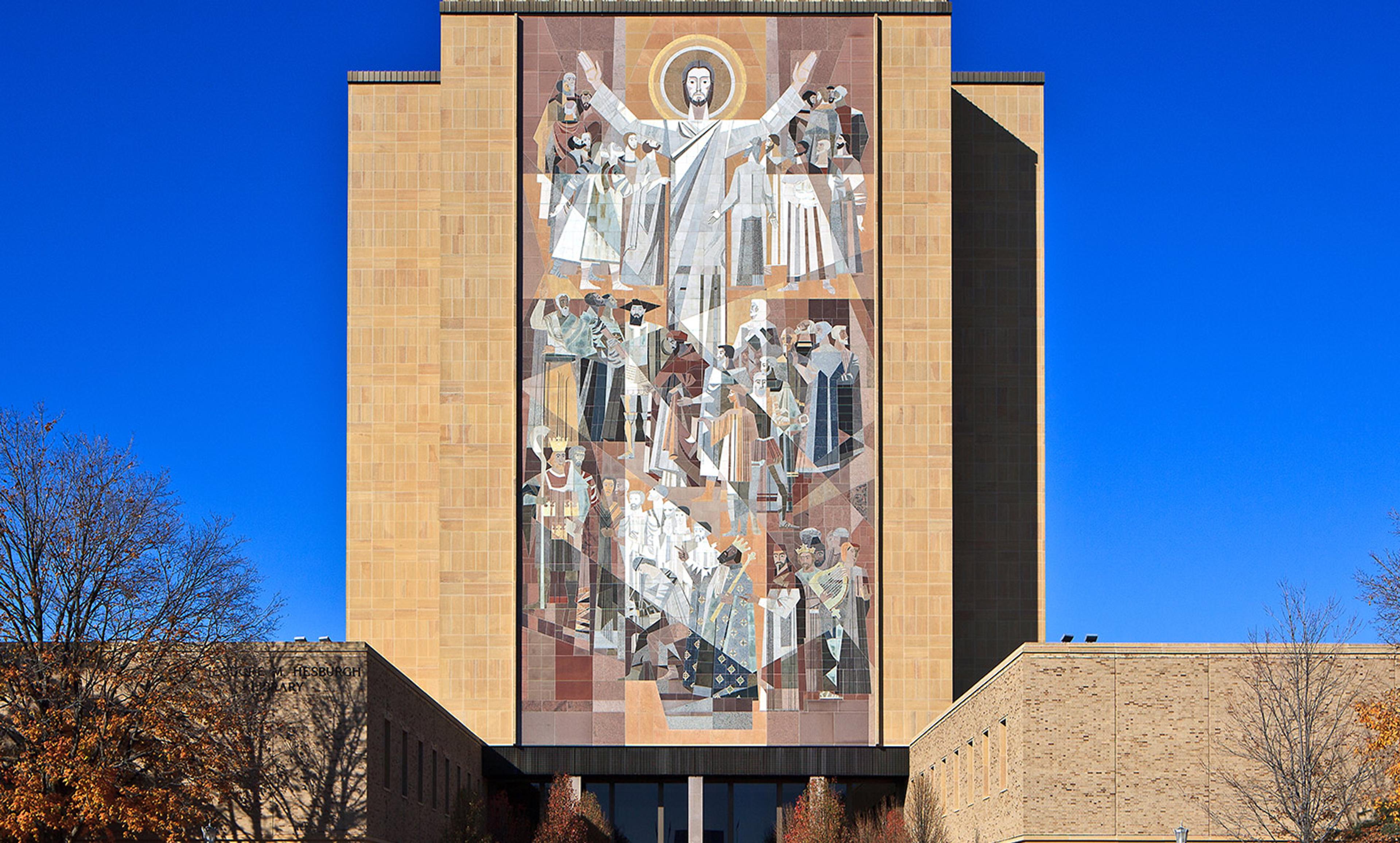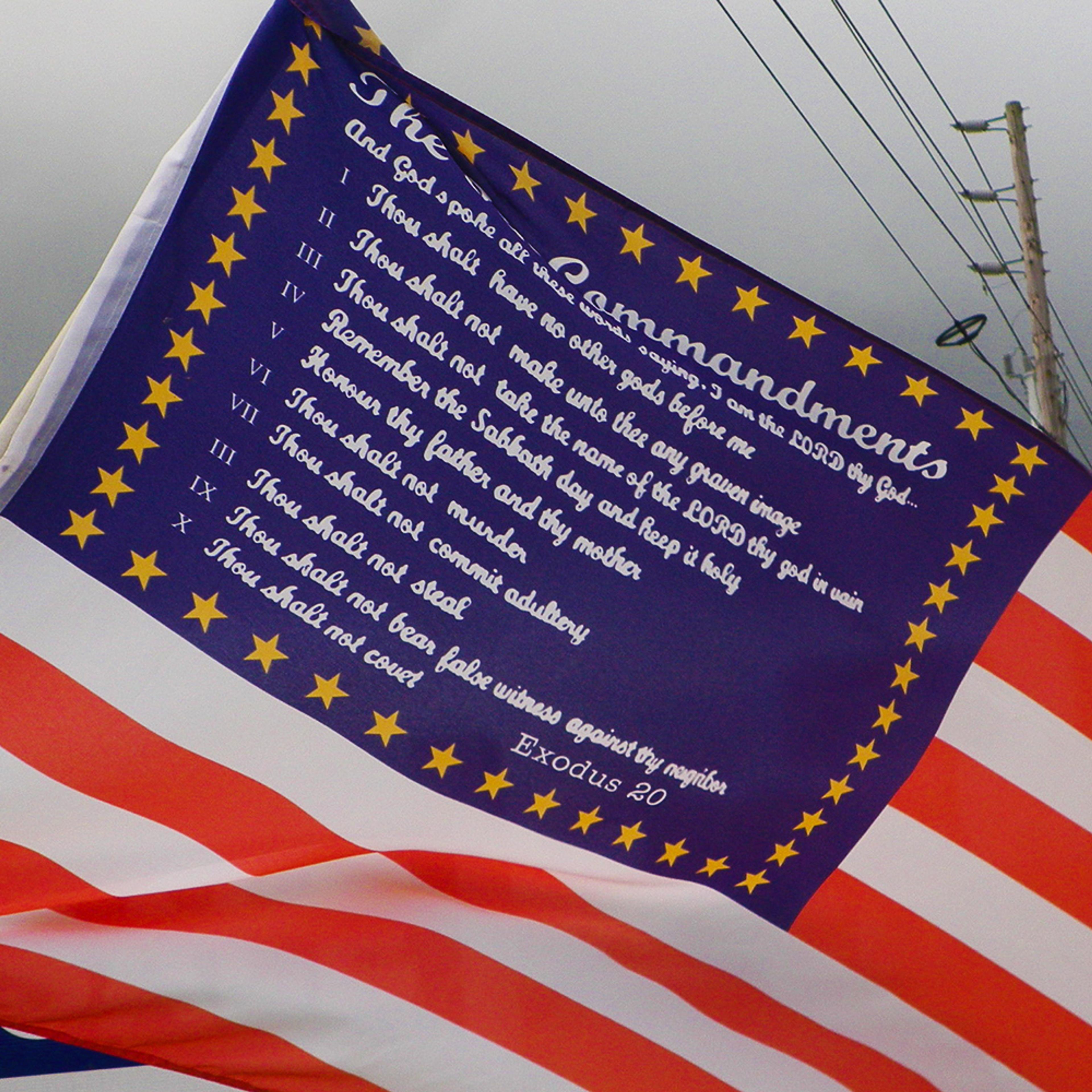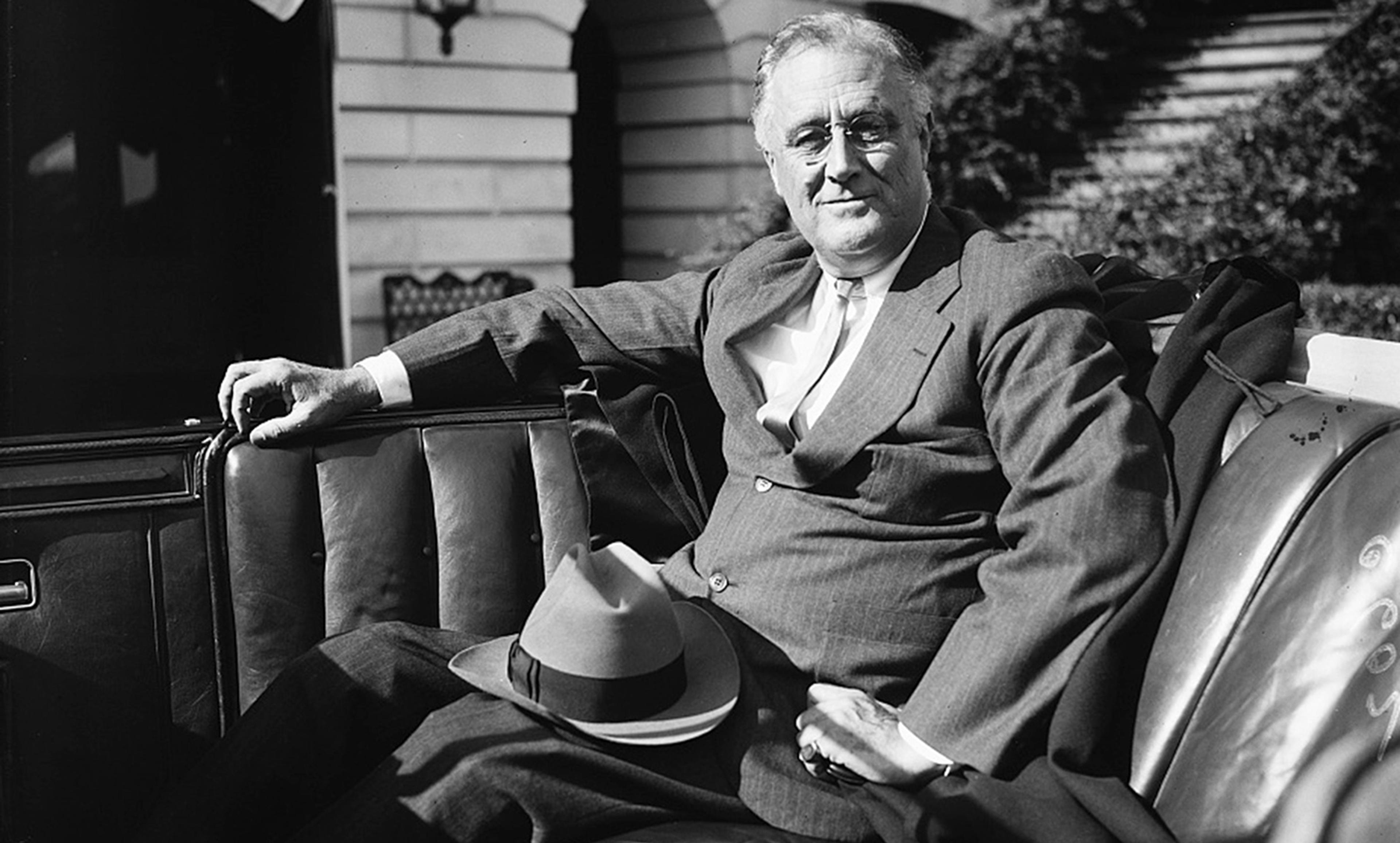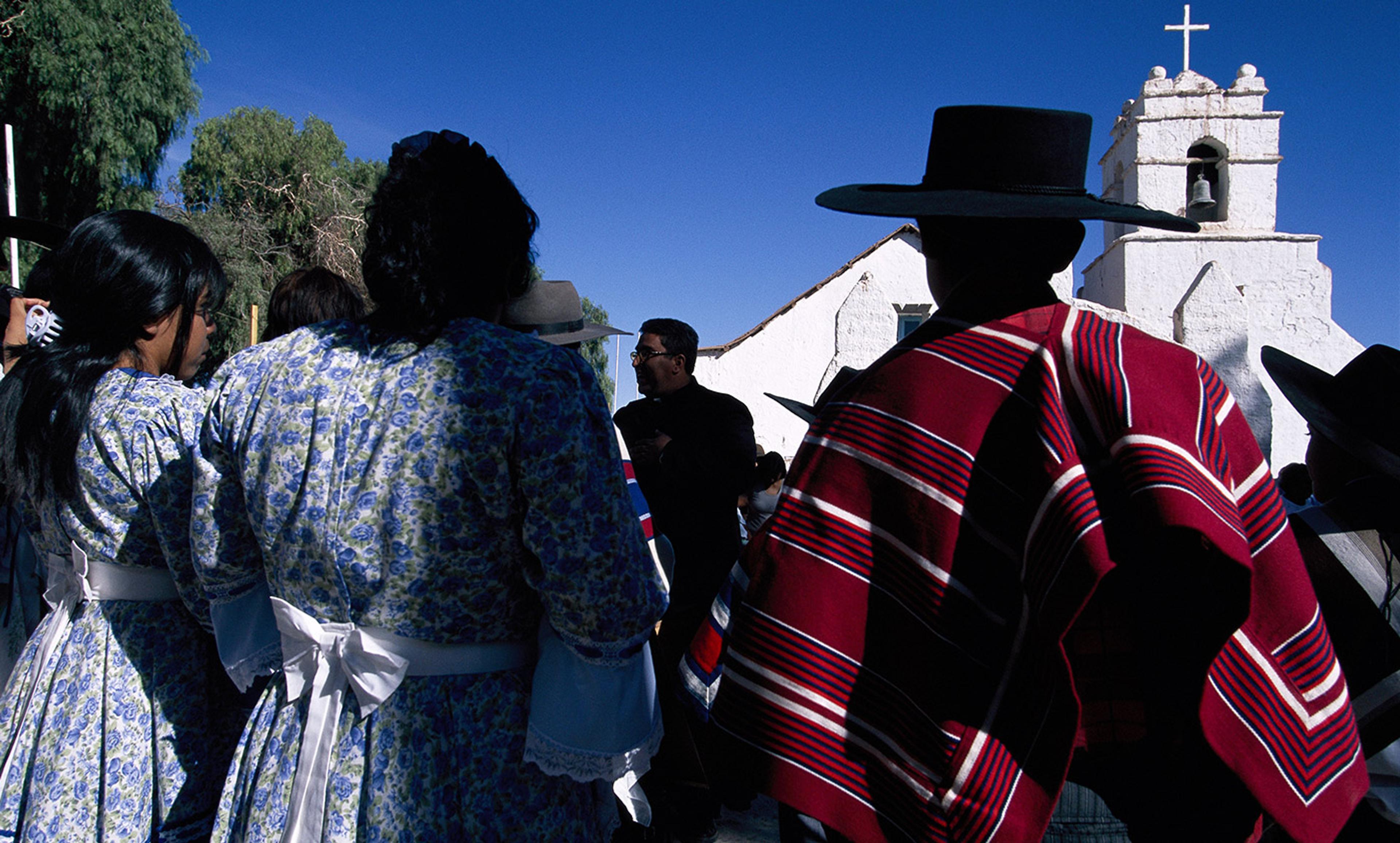‘The Word of Life’ mural, otherwise known as the ‘Touchdown Jesus’, at the Hesburgh Library, Notre Dame University. Photo courtesy Wikipedia
Catholics make up a disproportionate share of the intelligentsia of the religious Right in the United States. Although they constitute only a fifth of the US population (and white Catholics make up less than 12 per cent of the US population), they maintain a high profile among conservative think tanks, universities and professional organisations. On the US Supreme Court, four out of five Republican-appointed justices are Catholic, despite evangelicals making up a substantial portion of Republican Party support.
To understand Catholic overrepresentation on the US Supreme Court, and how Catholics in some sense became the brains of American conservatism, we must look to the history of Catholic education in the US.
Successive waves of Irish, German, Polish and Mexican migrants to the US made up most of the Catholic Church in the US. They faced persistent harassment from the country’s Protestant majority. In 1834, when a Protestant mob burned down an Ursuline convent near Boston, it was only an extreme example of popular American prejudice against Catholics.
Long a Europe-oriented institution, the Catholic Church had a tense relationship with liberalism, church-state separation and democracy. Often in the 19th century, the Vatican felt itself under siege by republicanism in France, where the state had seized Catholic lands and property, and in Italy, where nationalists had unified the country at the expense of the temporal power of the Papal States. This was the context, during the First Vatican Council of 1869-70, in which the Vatican proclaimed the Pope infallible, a rarely invoked doctrine but one that symbolised the incompatibility of conservative Catholicism with republicanism and secularism. The Vatican published an ‘index of forbidden books’ from the 1600s until 1948 (officially ending only in 1966, following the Second Vatican Council) that banned the laity from reading Baruch Spinoza, Thomas Hobbes, David Hume, John Locke, Martin Luther, Victor Hugo, Alexandre Dumas and Niccolò Machiavelli. Later, 20th-century authors including Jean-Paul Sartre and Simone de Beauvoir were added.
Of course, many American Catholics regularly ignored these prohibitions. And some American clergy believed that Catholicism should adapt to the values of its new homeland. But the Catholic hierarchy and especially the Vatican remained opponents of liberalism. In his encyclical Testem Benevolentiae Nostrae (1899), Pope Leo XIII even condemned ‘Americanism’, warning that it was wrong to desire ‘the Church in America to be different from what it is in the rest of the world’. Fear of republicanism and secularism partly drove American Catholics to set up separate institutions for themselves – separate social clubs, separate unions and separate charities.
Most influentially, they set up a parochial school system that educated Catholic children separately. Some of these schools came to be known for high-quality education. The elite Georgetown Preparatory High School in Maryland educated the Supreme Court justice Neil Gorsuch, the newly appointed Supreme Court justice Brett Kavanaugh, and the Federal Reserve chairman Jerome Powell.
Catholic orders likewise set up their own universities across the country. Georgetown University had been founded in 1789, Notre Dame in 1842, and Boston College in 1863. The founding of their law schools, in 1870, 1869 and 1929 respectively, assured that conservative ideas would find a home at these institutions. At first, Catholic universities were better-known for their football teams than their academics. That changed after the Second World War when they became important centres of US intellectual life. American Catholics benefited from a more tolerant attitude toward religious minorities amid the postwar celebration of ‘Judeo-Christianity’. Ideas that Pope Leo XIII had denounced as ‘Americanism’ are now broadly accepted at these universities.
The birth of the modern conservative movement coincided with the postwar growth of Catholic universities. In 1955, a pathbreaking conservative magazine, the National Review, was founded and edited by William F Buckley, Jr, a Catholic. It featured regular contributions by Russell Kirk, a convert to Catholicism, James Burnham, who was raised a Catholic, and Garry Wills, a lifelong Catholic who briefly trained to become a Jesuit. They did not speak for all Catholics, of course, many of whom voted for the Democratic Party, joined labour unions and espoused liberal ideas. Buckley’s group did however articulate ideas that were mainstream among Catholic clergy, such as a hatred of communism and opposition to church-state separation, abortion and the sexual revolution.
When evangelicals mobilised politically in the 1970s and declared a ‘culture war’ against the menace of secularism, they put aside their longstanding anti-Catholicism and reached out to Catholic conservatives. Catholics proved to be perfect partners. Unlike evangelicals, conservative Catholics could draw on research universities, law schools, medical schools, business schools and other intellectual-producing institutions in the fight against secularism. Evangelicals’ suspicion of higher education since at least the days of the 1925 Scopes trial over teaching evolution meant that they had built few institutions of higher learning. Their bible colleges and seminaries were meant to create believers and converts, not intellectuals.
One important exception was an effort by the evangelical theologian Carl Henry to build a research university in the 1950s to rival Harvard and Yale (not to mention Georgetown and Notre Dame). But Henry’s effort to raise $300 million quickly fell apart. Donors worried that the university would distract from proselytising, which they held to be far more important. They also clashed over student-conduct rules, such as whether alcohol and movies would be allowed at the new university. Evangelicals had no centralised authority to settle these disputes and, in any case, rigorous intellectual enquiry was not a priority for a tradition that argues that the basic insights of Christianity are matters of the heart more than the mind. Evangelical law schools and PhD programmes remain extremely rare in the US. Ironically, a tradition so devoted to spreading literacy saw too much learning as a potential danger.
So, Catholics contributed a disproportionate share of intellectuals and professionals for the religious Right, while evangelicals provided the bodies and the votes. Unlike the Jewish intellectuals clustered around neoconservative publications, Catholic conservatives were more reliable on cultural issues such as abortion. It is no small irony that Notre Dame has become the most important centre for the historical study of evangelicalism. In 1994, the influential historian, and evangelical, Mark Noll called the lack of rigorous intellectual activity among evangelicals a ‘scandal’. Ten years on, he celebrated ‘the increasing engagement between evangelicals and Roman Catholics’ for the ‘improved evangelical use of the mind.’
How long the Catholic-evangelical alliance in US politics will continue is hard to say, but it is still going strong. One only needs to look at the nomination of the Catholic Kavanaugh to the Supreme Court. Now confirmed, he replaces Anthony Kennedy, another Catholic, and keeps a five-seat conservative majority on the nine-person court (including Gorsuch, who grew up Catholic but now attends an Episcopalian church with his family). Three of the four finalists for Kennedy’s seat were Catholic.
Catholic intellectual life in the US is not solely conservative, and Catholic conservatism sometimes cuts across the Left-Right divide in the US (on immigration and the death penalty, for example). But it remains the case that Catholic intellectuals are overrepresented in the US conservative movement. By virtue of their 19th-century separationist anxieties and their investment in institutions of higher learning, Catholics have become the brains of the religious Right in the US.






